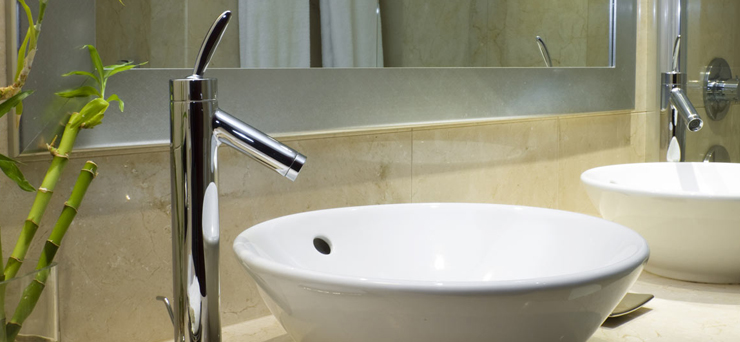-
Bathroom

BATHROOM MAINTENANCE CHECKLIST
Here is a broad bathroom maintenance checklist that will allow you to cover all the basics without chewing up every last hour of your general home maintenance schedule.
- Bathtub Maintenance and Shower Maintenance: For showers and bathtubs, having a good bead of caulk is key. If you have tile, make certain that the grout is solid and not full of holes or missing in some spots. If the caulking is worn and allows water to get behind the tile or the vinyl walls, you won't know how much is getting back there and you won't know there is damage until there is a lot of it. Caulk and grout ensures that all the water that hits those surfaces leaves through the drain. Caulk at least once year, but a better practice is to caulk when you notice an area where the caulk's integrity has been compromised. Also, be sure to have a good seal around the fixtures.
- Shower Doors and Shower Curtains: These can get pretty filthy if you're not paying attention. Any time you notice white film or black mold, particularly on the bottom of the door or curtain, pull out the curtain or door and scrub it down with an abrasive cleaner. Once you have the shower door out, check the tracks for mold or standing water. If water is standing in the tracks, drill small holes in discrete areas so that this water can drain back into the tub basin. Be sure to angle the drill in such a way that expedites the water out of the tracks more easily. These tracks often lose their caulking first because they endure a lot of wear and tear. Check this caulk a little more often than other areas.
- Toilet Maintenance: This can be a dirty job if you don't clean your toilet on a regular basis. But, aside from regular cleaning, take a rag around the base of the toilet every so often or just when you think of it to test for water. Often, small amounts of water will begin to seep out from the base. This is an early sign that the sealing ring is worn or no longer viable and bigger leaks are on their way. Also, open the back of the toilet to see if everything looks to be in good shape. Plumbers can often diagnose a problem in seconds just by opening the back. If the water level seems off, or the floatation device isn't floating, or something just doesn't seem right, call a plumber.